COVID-19 Is Driving ‘Dramatic’ Surge In HPE Cloud Volumes Backup: HPE Storage GM Tom Black
HPE‘s Cloud Volumes Backup service is experiencing a ‘dramatic expansion in customer accounts’ in the wake of the COVID-19 global pandemic, says HPE Senior Vice President/Storage General Manager Tom Black.
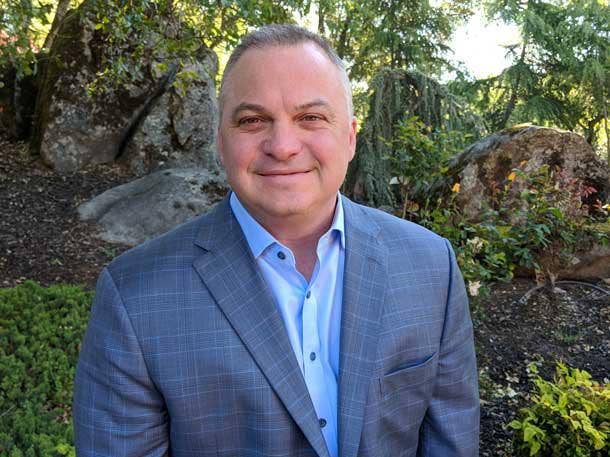
A Cloud Volumes Storage Surge
Hewlett Packard Enterprise’s Cloud Volumes Backup service is experiencing a dramatic increase in sales in the wake of the COVID-19 global pandemic, said HPE Senior Vice President/Storage General Manager Tom Black.
“We have seen a dramatic expansion in customer accounts for that [Cloud Volumes Backup service] because of COVID-19,” said Black in an interview with CRN. “What COVID taught us is that business continuity planning is really top of mind for CIOs these days. The idea that when people are locked at home you can’t operate the physical plant just doesn’t hold anymore.”
HPE unleashed Cloud Volumes Backup—its new enterprise multi-cloud backup service—at HPE Virtual Discover in June. As part of the launch of the new service, HPE has been offering a 90-day trial version of the service that includes up to 10 TiB (Tebibytes) of free capacity per month.
COVID-19 has shattered the preconception that the data center is a glass house off-limits to those working from home, said Black. “People are really thinking about this idea that you once had a pristine [data center] glass house, all HVAC-controlled, badge in, everything secure, you can’t get to it from an outside network,” said Black. “That is gone. Life is just very, very different now.”
Among the storage highlights of the most recent HPE quarter were 31 percent growth in big data storage solution sales driven in part by Cloud Volumes; 114 percent growth in the Primera next-generation intelligent storage platform with 104 new customers; and Nimble dHCI growth of 112 percent.
Black—a self-described technology innovation geek who holds four patents—is revving up the HPE Storage innovation engine with an eye toward driving “revolutionary” advances for customers and partners.
One of Black’s first big innovation bets: an InfoSight prototype aimed at helping partners drive sales upgrades and auto-generate storage solution recommendations for the rapidly growing InfoSight installed base.
“I am really dropping the hammer on deeper and deeper integration with our [InfoSight] AI platform to solve more and more meaningful problems,” said Black, a 24-year IT engineering R&D veteran who held top engineering posts at Cisco Systems and Arista Networks before joining HPE seven years ago to lead the networking team.
Black credited HPE President and CEO Antonio Neri for driving a much faster pace of innovation at HPE. “The joy I have had working for Antonio Neri is he is very much an innovation-, customer-centric sort of thinker,” said Black. “For someone like me who really likes to push the bleeding edge, it is just fun to hang out here. I have a great team, and you should expect a very different pace and a very aggressive innovation agenda for us as we move into the second half of this year and into next year.”
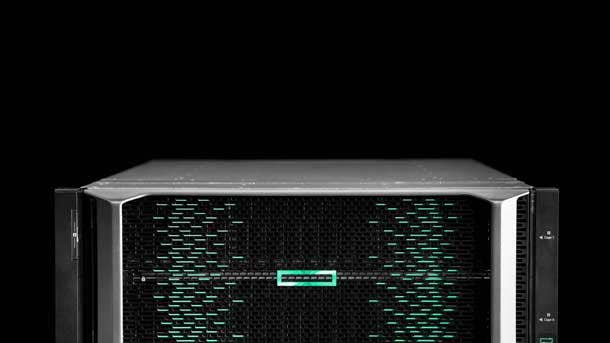
How do you see storage innovations around cloud progressing for HPE?
We are really keeping a focus on how we continue to augment our cloud story. You saw at us HPE Virtual Discover launch Data Protection as a Service—our Cloud Volumes Backup with the ability to build snapshots into our cloud and the ability to mount those volumes from any of the hyperscalers without having to import the data. That’s really good for heavy read analytics workloads— very, very cost-effective. Also we have containerized our StoreOnce technology and we run that in our cloud. So you have the ability to move data through the migration stages into secondary storage and ultimately into deep archive through that offer.
That actually worked really well for us. We have seen a dramatic expansion in customer accounts for that because of COVID-19. What COVID taught us is that business continuity planning is really top of mind for CIOs these days. The idea that when people are locked at home you can’t operate the physical plant just doesn’t hold anymore. Being able to flex [storage] capacity into a multi-cloud environment is key. We continue to work on and evolve our remote management capabilities.
Obviously, we are there with a very strong proof point with InfoSight. Hopefully we get over COVID-19 soon, but what happens when there is a COVID-21 or a COVID-23? People are really thinking about this idea that you had a pristine [data center] glass house, all HVAC-controlled, badge in, everything secure, you can’t get to it from an outside network. That is gone. Life is just very, very different now.
We’re looking at managing from anywhere particularly with being flexible in a multi-cloud environment.
HPE is offering 10 TiB, or Tebibytes, of Cloud Volumes storage free for 90 days. How has that impacted customer demand for Cloud Volumes?
During COVID we saw a shocking, shocking number of customer upticks. Part of it is we made it a good deal for people, and part of it is just the nature of the solution really resonates, particularly the backup offer. That has gone really well for us.
How does Cloud Volumes work in a multi-cloud environment?
Cloud Volumes is in our own colo. So the data is there. You can mount those volumes from [Microsoft] Azure or AWS without having to move them in. The ingress fee is cheap [for public cloud], but the egress is expensive. So if you have a large data set you want to spin up with a ton of video, you put it there [in HPE Cloud Volumes] and you can pick some PaaS service off AWS or Azure to run off that data set.
One of my kids in college was using some AI/ML libraries working with his professor on a project. They were analyzing tons of video in the [Lake] Tahoe region to try to identify lightning strikes and forest fires. It just so happens they needed to use the video analytics capabilities from one of the hyperscalers. So they had the ability to take those large data sets and not have to move them around and take advantage of best-of-breed PaaS services. That is something unique to the offer: that seamless flow from Primera to Nimble to Cloud Volumes Backup.
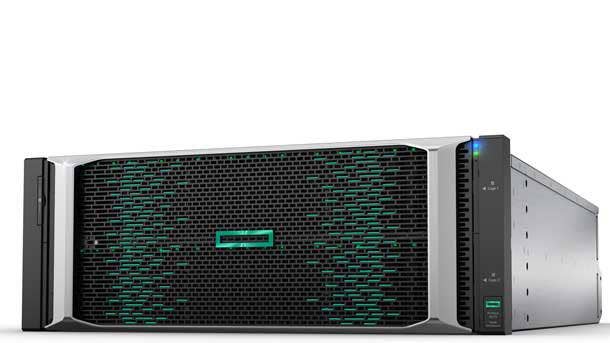
What is your advice for partners selling storage in a COVID-19 world?
Everybody got stretched and put behind by shelter in place. The intimacy that you can show in an engagement with your customers via our AIOps, and the flexibility offered by Cloud Volumes, particularly Cloud Volumes Backup, put you in a very empathetic and human dialogue with someone trying to manage a department through this crisis.
It’s all about helping try to get things back to normal and showing that you understand the customer’s business and where to take them. You need to show them you have some unique offerings in the portfolio via the tools we have talked about. That is the zero- to four- to six-month play.
If you look at this secularly, storage was one of most affected of the three pillars [storage, networking, compute] with COVID-19. Huge projects slowed down mostly because of physical access. The things we have done lately to try to support people include a focus on Primera—which is the only 100 percent data availability guaranteed system that is customer self-installable and upgradeable. There is not some 90-page contract. You buy it, get a support contract and if there is any issue—misconfig, a network issue, any issue at all—we write you a check for 20 percent of the remaining contract value of the system.
We have got over 2.6 million runtime hours on Primera now in the field. We have had zero outages until very recently. It was unfortunately a misconfig—not done by us—but we still wrote the check. No questions asked.
Right now my foot forward [message] to partners and customers is we are paying a lot of attention to what you are going through. We have very fair offers, customer-installable so you don’t need to get 15 people into personal protective equipment and gear into a data center. We have tier zero systems—90-plus percent of our Nimble systems are customer- or partner-installed. You don’t need a huge project for that.
We have global intelligence for our storage—AI and machine-learning software built around an 8-Petabyte data lake. That is an expression of customer intimacy and care that flows through with predictive warnings as well as just helping customers understand what is going on in their [storage] environment anywhere in the world.
With Cloud Volumes Backup and Cloud Volumes we have the ability to move your data around in a very cost-effective multi-cloud environment. That is the thesis for the second half of our fiscal year. We have a complete offer. We are using every tool we have to make your life as customers and partners safer and easier. Long term we are keeping an eye on a very significant technology transition that is coming up.
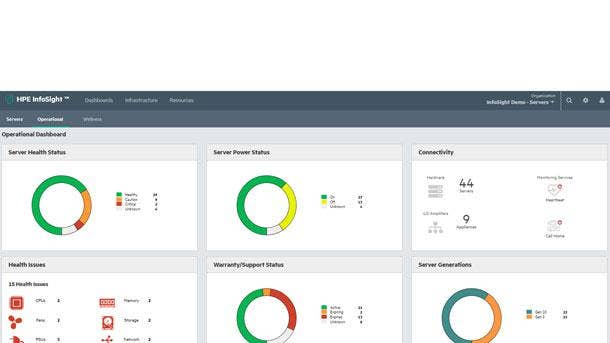
How powerful is InfoSight as a competitive advantage for HPE?
We started InfoSight in 2010. We are nearly a decade into this. We have instrumented the whole portfolio [with InfoSight]-Nimble being the most advanced because InfoSight was built around [Nimble]. That is an 8-Petabyte data lake. It has over 1.25 trillion data points in it. So I can tell you three years ago what happened on Volume 47. What was min or max latency? I can tell you what is happening with your capacity. The amount of information and the amount of intimacy we have with [InfoSight] in the field is simply astounding.
How has that customer intimacy translated into better customer support?
Look at the Nimble support model and the tremendous strides we have made with Primera. With Nimble support we have no L-1 [Level 1)] or L-2 [Level 2] support. In 60 seconds or less, you are into L-3 [Level 3 support]. Thirty minutes or less you are into engineering. Eighty-six percent of the support cases are opened automatically and remediated by the software. All of our products continue to get stronger and stronger in that dimension.
What it means for partners and customers is 1.5 million hours of time saved from outages or other configuration issues. When you are a partner and you go to take a project on, you can’t afford to get stuck with the deployment or post-deployment, or going back and revisiting issues. You want to be in and out. You want to make your margin, build that relationship with the customer and be that trusted adviser. You want to be that person that the customer believes has done the right thing for them so you can have a long-term relationship.
The intelligent data platform particularly built around the intelligence in InfoSight is absolutely a unique asset to the company. So I am really dropping the hammer on deeper and deeper integration with our AI platform to solve more and more meaningful problems. We are even doing things using that intelligence. It is in the prototype phase right now. I just showed it to a bunch of people in the company. We are using the intelligence in partner campaigns so they know not only when a customer is ready for an upgrade or a refresh, but actually helping auto-generate advice and information for them to basically reduce the amount of time it would take them to go in and assess an environment, figure out the right recommendation and move forward.
So we are leveraging the AI not just for the delightful support experience but moving forward you’ll see us leveraging that to actually increase profitability and reduce the time that a partner would be going to market with.
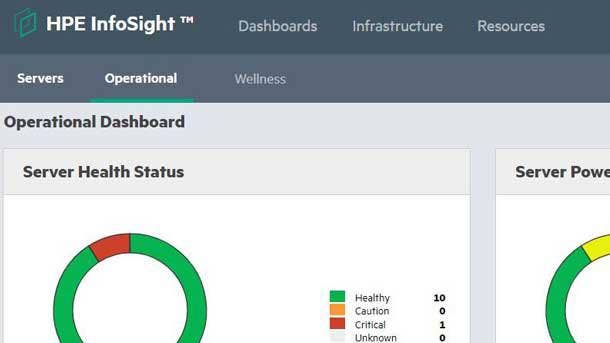
So are you using InfoSight to develop sales leads to upgrade customers?
I won’t describe it just yet. … Come back to me in a couple of months and I’ll actually give you a tour of what it will mean to be a partner once we have this kind of information available.
It is a step forward using AI not just for a support experience or to avoid a performance issue but also to assist someone in that sales cycle by increasing their customer intimacy. There is a difference between [a competitor sales rep] walking into an environment and saying, ‘What do you have and let me see if I can help you?’ [versus the data that our partners have using InfoSight].
It’s very different walking into an environment saying, ‘I know exactly what you have, I know where you are at and I think I understand where you should go next and here are the financials around it.’ What we are doing is using software to completely change the overall experience—not just the post-installation experience, but the up-front experience. That is a unique capability we have because of InfoSight.
How big a sales game-changer could be that for partners?
Ask me in a couple of months. I need to get feedback. We are heading into beta. We are using the unique InfoSight AI asset to try to transform all aspects of how a partner or customer experiences doing business with us. It is focused on increasing productivity and for a partner to increase profitability—all with this obsession around customer intimacy and relevancy.
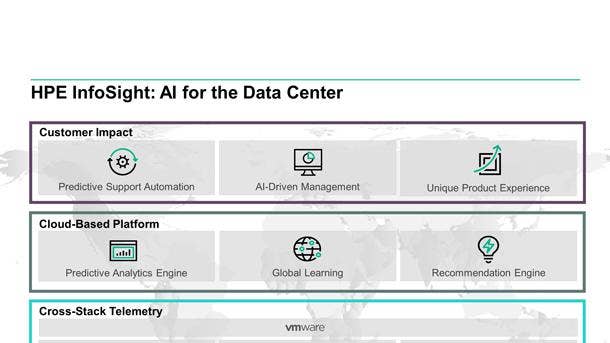
What is the overriding theme that you see driving HPE Storage?
Call it the intelligent data platform. At its heart it is a deep obsession with customer and partner intimacy both from a support experience and an operational data experience. We are looking to see how we can use that intelligence to increase productivity and profitability in our partner environment moving forward.
What was it like stepping into the storage role after heading up the networking business?
I am every fortunate to have stepped into [HPE] storage post the Nimble acquisition, post a real investment in InfoSight. This whole AIOps thing is a really common new buzzword. Everybody has latched onto it.
But I am a very customer in, customer-centric, don’t build a product and tell the customer they need to buy it. You need to listen to the customer, listen to their problems and then go give them the right solution.
So when I stepped into the storage team I found a really good portfolio, but more importantly there was this very customer-centric culture and this true belief in the customer experience.

What kind of storage innovation do you expect in the next several years?
The whole industry from 2021 to 2025 has a huge technology transition ahead that will create all kinds of new solutions and offers for people. You saw us come up with a slew of new Primera capabilities recently. We have a lot more coming. You know me. I can’t stop dropping innovation out the door. It’s a factory when I am having fun.
What are the most significant storage technology advances coming to market?
There is a significant happening starting in the second half of 2021 and going on for a few years with storage in the data center built around NVMe over Fabrics. We went from one SCSI queue in the Linux kernel to 64000 parallel queues. We built protoype systems well over a year ago that shows eight NVMe drives across a network over 200 Gigabit Ethernet. Basically it gives you DAS [direct-attached storage]-like performance across the network, which is truly, truly, truly amazing and different.
The front of NVMe-oF [over Fabrics] still needs a little work—multi-hop, RoCE v2—is the industry going to go towards NVMe over TCP/IP. So there is some flex in the system. The Linux kernel has already mainlined the support. VMware just announced in [vSphere] version 7 their first version of that support.
We announced NVMe drives and NVM-oF capable systems on Primera. So you are going to see over the next year the first transformative price/performance bump in storage since flash started happening.
Think about the ability to drive significantly higher bandwidth all built around standard Ethernet-based fabrics. That is going to be very helpful to customers. It is going to be unifying common fabrics and giving customers a lot more bang for the buck. And then you’ll see customers layering rich data services on top of that performance gain.
This technology is what every vendor is keeping an eye on, watching how it matures in the industry. You are just starting to hear the buzz about this now. People have early releases of this. That is really transformative technology.
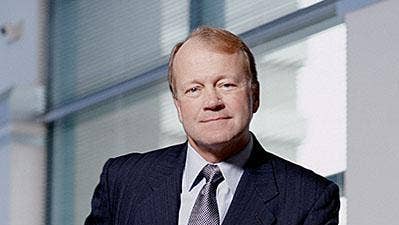
How does HPE’s view of NVMe over Fabrics different from Dell VMware and Cisco?
I think you’ll see NVMe over Fabrics technology used both in software-defined storage and networking—there are some startups out there in that area kicking around right now—and your classic external [storage] array will offer that as an option. We already shipped NVMe on our Primera systems. It is early days for this. This is something that we see strategically and something that is really exciting. You’ll have to watch over the next six to nine months to see what kind of bets people are making and at what speed.
Being an ex-networking guy, it is a very exciting time. I actually worked on some of the earliest versions of Fibre Channel. I worked on a Fibre Channel SCSI router many, many years ago back in the mid-90s. I watched Fibre Channel go through that progression.
Where are some of the big investments HPE is making in storage?
I grew up under [former Cisco CEO] John Chambers (pictured). One of the things he taught folks is that big market-share moves happen around technology transitions.
Part of what was so exciting for me to join storage at this time is I inherited a really stable business, a really good team, some really advanced software capabilities with InfoSight, all of it heading right into a two- to five-year window of a major technology transition. For an engineer and a geek like me, you just couldn’t ask for more. This is a target-rich environment for innovation with easy ways to motivate engineers and easy ways to do beautiful things for your customers and partners.
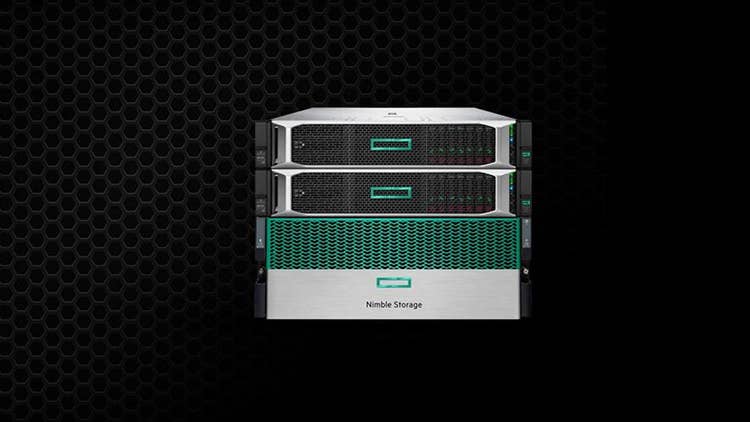
What is the HPE software-defined and hyperconverged storage story versus Cisco and Dell VMware?
InfoSight is truly an advantage. There are people trying to mimic that talk track. I am a fan of only the paranoid survive. I expect them to continue to try to do smart things and respect them as competitors.
For HCI we actually have a very unique position. We have an appliance form factor that has done really well—that is more in commercial and is partner-led. We also have some huge distributed edge deployments. Think about big box stores particularly combined with Aruba. We are the only vendor that has a full-stack complete solution. Cisco would probably be the closest.
The unique thing for us is we can manage enterprise-grade edge gear from the cloud—none of the competitors are quite there yet. We can really bring a full stack to the edge, which is where 75 percent of the new data will be deployed. dHCI has just been a phenomenal offer for us. That is really starting to grow. That gives us the ability to asynchronously scale compute and storage, particularly IO-intensive workloads.
HCI appliances aren’t known for being the highest-performance machines in the world compared to classic very performance tuned external arrays. We have basically wrapped a common user experience integrated into [VMware] vCenter around both the enterprise data center solution that can handle many more workloads, has more flexibility with dHCI and then really driving the appliance form factor more than that commercial midmarket data center and then down into the edge. Now it is used in the enterprise data center. There is no black and white here. It is a unique, compelling offer.
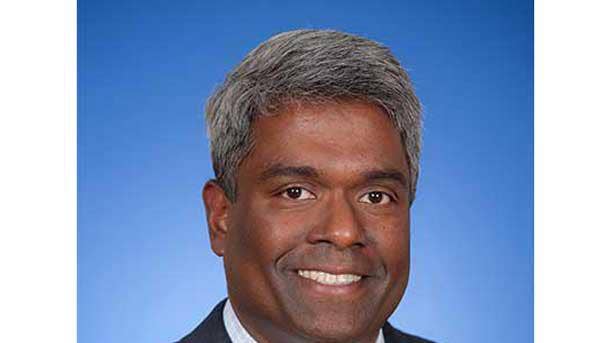
Talk about your background in both networking and storage.
My old boss at Cisco was George Kurian (pictured), who now runs NetApp. Charlie Giancarlo was CTO at Cisco and now runs Pure [as the CEO]. My lead architect for Aruba ASICs was formerly lead architect of the Tachyon chip, which was in pretty much every array built for the better part of 10 to 15 years. Half of that ASIC team came from storage.
There is a kind of a bus that goes back and forth between networking and storage. I attribute that to a few things: Core networking and storage have a massive blast radius. They have a very similar go-to-market model and a high degree of customer intimacy. You just can’t make a mistake.
At an operational level, there is familiarity between the two segments—different than rack compute. Rack compute is a slightly different sort of relationship in terms of blast radius. HPC certainly has a huge blast radius.
At an engineering level—and I am still an engineer at heart that likes to get his hand in the details—what you find interestingly enough is your big tier-two arrays from multiple vendors—inside they tend to be ASIC-driven. They are a lot like a core internet router.
If you look at midrange arrays you see they tend to have big CPUs with big PCI trees and a lot of peripherals hung off of them— kind of like an edge router. So the system architectures are very similar. At a software level these are all fundamentally distributed systems.
The features are very different on the data sheet, but a brilliant router discards all the right packets and a brilliant array never loses a bit.
A two-node controller architecture for a Nimble or Primera is very, very similar to a chassis basis network switch with two route processors in it. So you are constantly seeking state. The reason engineers kind of swirl around is at a fundamental engineering level the science is very, very similar. There are differences, but that is why you see a lot of secular rotation.
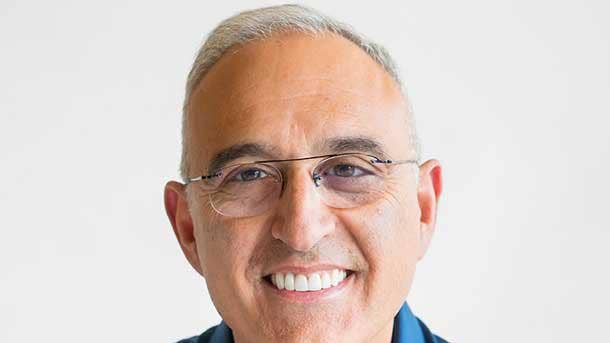
What was it like moving from networking to storage?
It was really fun the first three months on the job to jump right in because as I started to tear apart all the hardware block diagrams and the software block diagrams of the portfolio I recognized 70 [percent to] 80 percent of this. It has got some different terms. It is this indirection layer in the file system versus this indirection layer in the ARC table but the principle is the same.
It was an exciting opportunity when the company decided to report storage as an external entity. My predecessor wanted to retire. He had been here a long time. Antonio called me and said, ‘I have a new gig for you.’ I said, ‘Yes, boss.’
What kind of impact has Antonio had on you and the storage team?
The joy I have had working for Antonio Neri (pictured) is he is very much an innovation-, customer-centric sort of thinker. For someone like me who really likes to push the bleeding edge, it is just fun to hang out here. I have a great team, and you should expect a very different pace and a very aggressive innovation agenda for us as we move into the second half of this year and into next year.